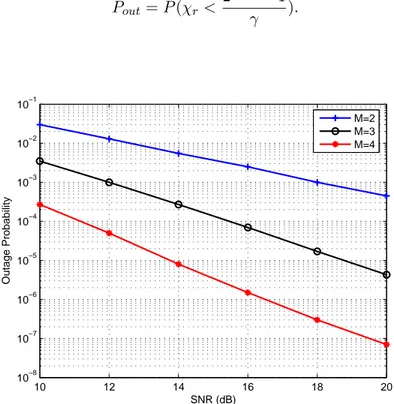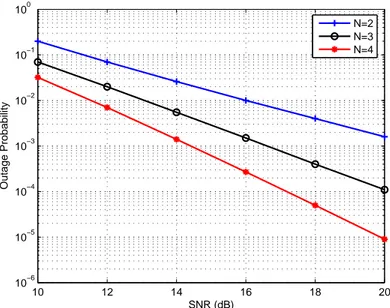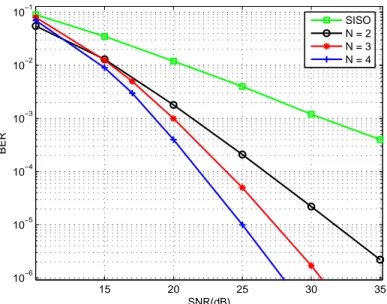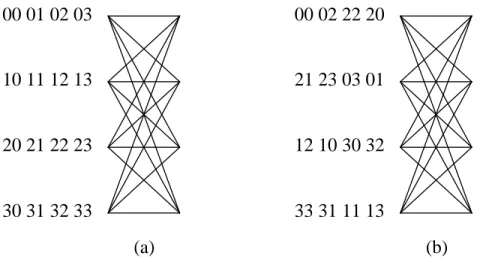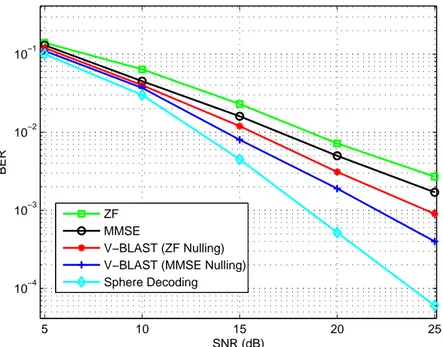Stratégies de MIMO coopératif pour les réseaux de capteurs sans fil contraints en énergie
Texte intégral
Figure
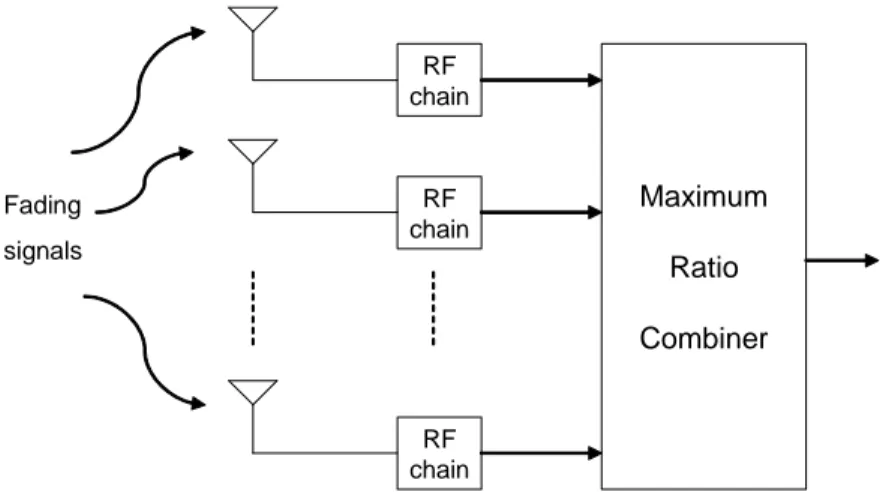
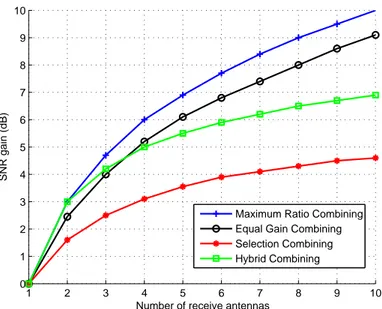
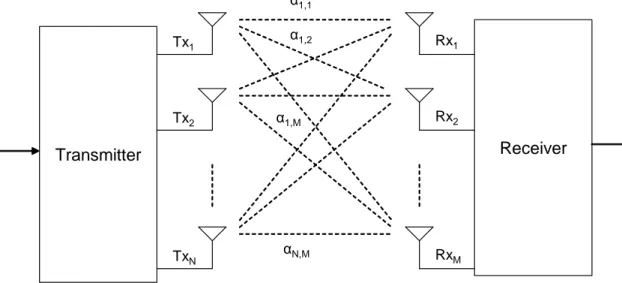

Documents relatifs
Par la suite, nous avons calcul´e l’´energie totale consomm´ee par bit ainsi que la capacit´e de syst`eme de communication consid´er´e et nous avons d´etermin´e la variation de
In this work we consider the question of achieving MIMO capacity with lattice codes and we prove that there exists a family of so-called multi-block division algebra codes [3, 4]
The purpose of this work is to explore the applications of MIMO systems with focus on a Space-Diversity Technique for combating signal fading, so that broadcasting media in
In parallel, the channel matrix of a cellular Multiple- Access (MAC) channel can be expressed in terms of the path-loss variance profile, which depends on the considered
Index Terms—Finite block-length, second-order coding rate, error probability, quasi-static fading channel, block-fading chan- nel, MIMO, information spectrum, random matrix theory..
LINEAR PRECODING + CHANNEL CODING Linear Precoding was introduced to exploit the transmit diversity, leading to a maximum diversity gain (exponent of the error prob- ability:
These techniques are well suited to downlink situation where an elevated access point (situated above the surrounding clutter) transmits to a subscriber placed in a rich
For an arbitrary given OSTBC, exact SER expressions have been derived for a precoded MIMO system for communication over correlated Ricean channels.. The receiver employs MLD and
